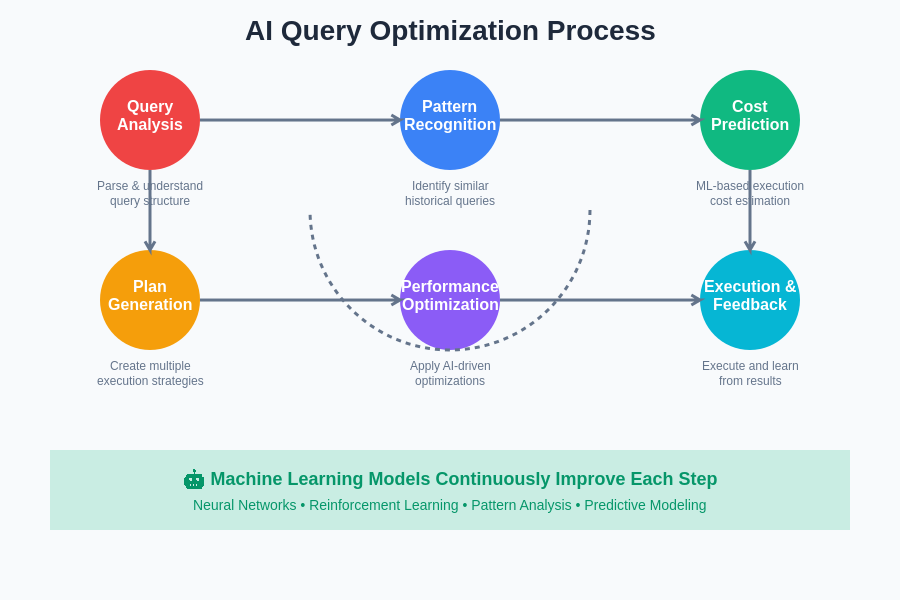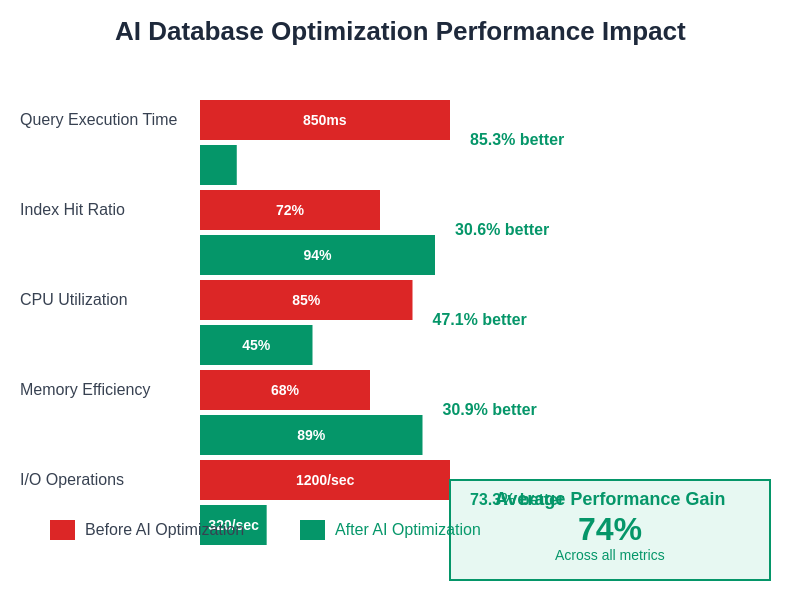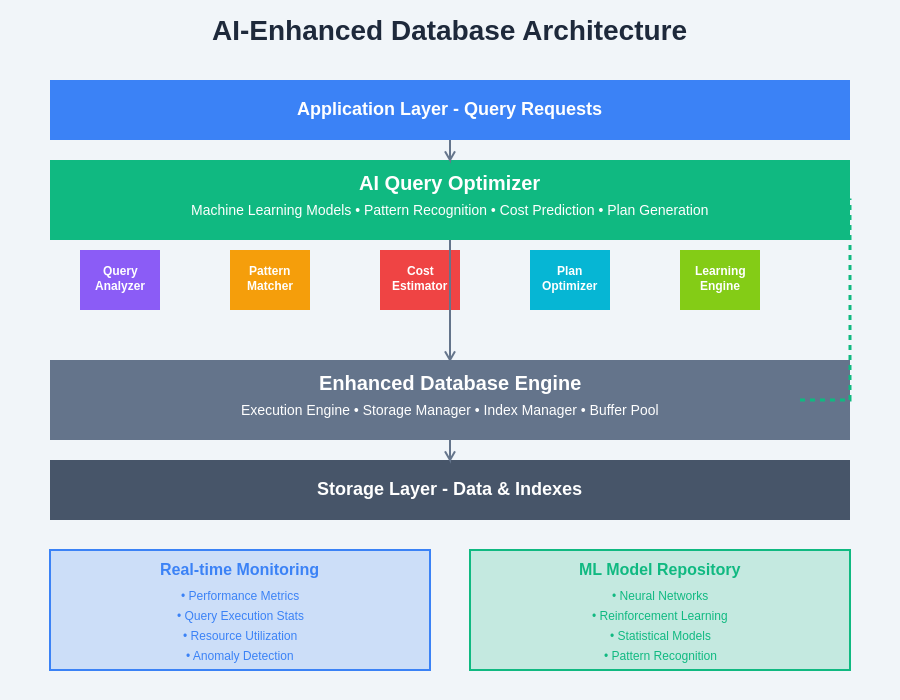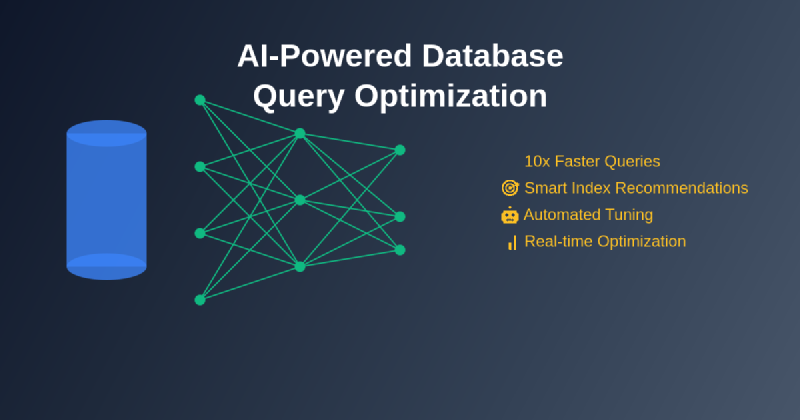The realm of database management has witnessed a revolutionary transformation with the integration of artificial intelligence into query optimization processes. Traditional database optimization relied heavily on manual analysis, expert knowledge, and time-intensive trial-and-error approaches that often proved inadequate for the complex, dynamic workloads of modern applications. AI-powered database query optimization represents a paradigm shift that leverages machine learning algorithms, pattern recognition, and predictive analytics to automatically enhance database performance, reduce query execution times, and optimize resource utilization with unprecedented precision and efficiency.
Explore the latest AI developments that are reshaping database technology and performance optimization strategies. The convergence of artificial intelligence and database management systems has created opportunities for organizations to achieve performance levels that were previously unattainable through conventional optimization techniques, fundamentally changing how databases are designed, maintained, and optimized for peak performance.
The Evolution of Database Query Optimization
Database query optimization has historically been a complex discipline requiring deep expertise in database internals, execution plan analysis, and performance tuning methodologies. Traditional query optimizers relied on statistical models, cost-based algorithms, and rule-based heuristics to determine optimal execution plans for SQL queries. However, these conventional approaches often struggled with complex queries, dynamic workloads, and evolving data patterns that characterize modern database environments. The limitations of traditional optimization became increasingly apparent as applications grew more sophisticated and data volumes expanded exponentially.
The introduction of artificial intelligence into database optimization has addressed many of these longstanding challenges by providing adaptive, self-learning systems capable of continuously improving query performance based on historical execution patterns, workload characteristics, and system resource availability. AI-powered optimization systems can analyze vast amounts of query execution data, identify performance bottlenecks, and automatically adjust optimization strategies to achieve optimal performance across diverse workload scenarios.
Machine Learning Approaches to Query Optimization
Modern AI-powered database systems employ sophisticated machine learning techniques to enhance query optimization processes. These systems utilize neural networks, reinforcement learning, and ensemble methods to predict query execution costs, estimate cardinalities, and select optimal execution plans. Deep learning models can analyze complex query patterns, understand data distribution characteristics, and make intelligent decisions about index usage, join ordering, and resource allocation that surpass the capabilities of traditional cost-based optimizers.
The application of machine learning to query optimization extends beyond simple performance prediction to encompass comprehensive workload analysis, resource allocation optimization, and adaptive tuning strategies that respond dynamically to changing system conditions. These intelligent systems can learn from query execution history, identify recurring patterns, and proactively optimize database configurations to prevent performance degradation before it impacts application performance.
Enhance your AI development capabilities with Claude for implementing sophisticated database optimization algorithms and machine learning models. The integration of advanced AI tools enables developers to create more intelligent database systems that can automatically adapt to changing workload requirements and optimize performance without human intervention.
Automated Index Recommendation and Management
One of the most significant contributions of AI to database optimization lies in automated index recommendation and management systems. Traditional index design required extensive analysis of query patterns, data access frequencies, and storage overhead considerations. AI-powered systems can automatically analyze workload patterns, identify optimal indexing strategies, and continuously monitor index effectiveness to ensure optimal query performance. These intelligent systems can recommend composite indexes, partial indexes, and specialized index types based on comprehensive analysis of query execution patterns and data characteristics.
The automated management of database indexes through AI systems extends to dynamic index creation and removal based on workload evolution. Machine learning algorithms can predict the impact of proposed indexes on overall system performance, considering factors such as storage overhead, maintenance costs, and query performance improvements. This comprehensive approach to index management ensures that databases maintain optimal performance while avoiding the storage and maintenance overhead associated with unnecessary or redundant indexes.
Intelligent Query Rewriting and Transformation
AI-powered database systems excel at intelligent query rewriting and transformation processes that can significantly improve query performance without requiring manual intervention. These systems employ natural language processing techniques, syntax analysis, and semantic understanding to identify equivalent query formulations that execute more efficiently. Advanced AI algorithms can automatically transform complex subqueries into joins, optimize conditional logic, and restructure query components to leverage available indexes and database features more effectively.
The query transformation capabilities of AI systems extend to cross-database optimization scenarios where queries span multiple database systems or data sources. Machine learning models can analyze the characteristics of different data sources, network latency considerations, and processing capabilities to determine optimal query distribution strategies that minimize execution time and resource consumption across heterogeneous database environments.

The sophisticated process of AI-driven query optimization involves multiple stages of analysis, prediction, and adaptation that work together to achieve optimal database performance. This comprehensive approach ensures that every aspect of query execution is optimized for maximum efficiency and resource utilization.
Predictive Performance Modeling and Capacity Planning
Advanced AI systems provide predictive performance modeling capabilities that enable proactive database optimization and capacity planning. Machine learning models can analyze historical performance data, workload trends, and system resource utilization patterns to predict future performance requirements and identify potential bottlenecks before they impact application performance. These predictive capabilities enable database administrators to make informed decisions about hardware upgrades, configuration changes, and optimization strategies based on data-driven insights rather than reactive troubleshooting.
The integration of predictive modeling into database optimization processes extends to automated scaling recommendations, resource allocation optimization, and performance trend analysis that helps organizations maintain optimal database performance as their applications and data requirements evolve. AI-powered systems can simulate the impact of proposed changes, predict the effectiveness of optimization strategies, and recommend the most cost-effective approaches to achieving desired performance levels.
Real-Time Workload Analysis and Adaptation
Modern AI-powered database optimization systems provide real-time workload analysis and adaptation capabilities that enable dynamic optimization adjustments based on current system conditions and performance requirements. These systems continuously monitor query execution patterns, resource utilization, and performance metrics to identify optimization opportunities and automatically implement performance improvements without disrupting ongoing operations.
The real-time adaptation capabilities of AI systems extend to intelligent resource allocation, dynamic query routing, and adaptive caching strategies that respond to changing workload characteristics and system conditions. Machine learning algorithms can detect performance anomalies, identify resource contention issues, and automatically adjust database configurations to maintain optimal performance across varying workload scenarios.
Leverage Perplexity’s research capabilities for comprehensive analysis of database optimization strategies and emerging AI technologies in database management. The combination of advanced research tools and AI-powered optimization systems enables organizations to stay at the forefront of database performance optimization techniques.
Automated Database Tuning and Configuration Optimization
AI-powered database systems excel at automated tuning and configuration optimization processes that traditionally required extensive manual effort and specialized expertise. Machine learning algorithms can analyze system performance characteristics, workload patterns, and resource utilization to automatically adjust database parameters, memory allocation, and configuration settings for optimal performance. These intelligent tuning systems can optimize buffer pool sizes, connection parameters, timeout settings, and other critical configuration elements based on comprehensive analysis of system behavior and performance requirements.
The automated tuning capabilities of AI systems extend to continuous monitoring and adjustment processes that ensure database configurations remain optimized as workloads evolve and system conditions change. Advanced algorithms can detect configuration drift, identify suboptimal settings, and automatically implement corrective measures to maintain peak performance without requiring manual intervention or expert analysis.
Advanced Statistics and Cardinality Estimation
Accurate cardinality estimation represents a critical component of effective query optimization, and AI-powered systems have significantly improved the accuracy and reliability of these estimates through advanced statistical modeling and machine learning techniques. Traditional cardinality estimation methods often struggled with complex predicates, correlated columns, and skewed data distributions that characterize real-world database environments. AI systems employ sophisticated statistical models, histogram analysis, and pattern recognition algorithms to provide more accurate cardinality estimates that lead to better query execution plans.
The integration of machine learning into cardinality estimation processes enables adaptive modeling approaches that continuously improve estimation accuracy based on query execution feedback and actual result set sizes. These self-learning systems can identify estimation errors, adjust their models accordingly, and provide increasingly accurate predictions that enhance overall query optimization effectiveness.

The quantifiable benefits of AI-powered database optimization are substantial across multiple performance dimensions. Organizations implementing AI-driven optimization solutions consistently achieve significant improvements in query execution times, resource utilization efficiency, and overall system throughput compared to traditional optimization approaches.
Cross-Platform and Multi-Database Optimization
The complexity of modern enterprise environments often involves multiple database systems, cloud platforms, and hybrid architectures that present unique optimization challenges. AI-powered optimization systems excel at cross-platform analysis and multi-database optimization strategies that consider the characteristics of different database engines, network topologies, and resource constraints. Machine learning algorithms can analyze query patterns across heterogeneous environments, optimize data distribution strategies, and recommend architectural improvements that enhance overall system performance.
The multi-database optimization capabilities of AI systems extend to intelligent query routing, load balancing, and resource allocation strategies that maximize performance across distributed database environments. Advanced algorithms can predict the optimal execution location for queries, balance workloads across multiple database instances, and optimize data placement strategies to minimize network overhead and maximize query performance.
Integration with Cloud and Distributed Systems
Cloud computing and distributed database architectures have introduced new optimization challenges and opportunities that AI-powered systems are uniquely positioned to address. Machine learning algorithms can analyze cloud resource pricing models, performance characteristics, and scalability patterns to optimize cost-effectiveness while maintaining performance requirements. AI systems can automatically adjust resource allocation, implement elastic scaling strategies, and optimize data placement across cloud regions based on comprehensive analysis of performance requirements and cost considerations.
The integration of AI optimization with distributed database systems enables intelligent partitioning strategies, replication optimization, and consistency management approaches that balance performance, availability, and consistency requirements. Advanced algorithms can predict the impact of distribution strategies on query performance, optimize data locality, and implement adaptive consistency models that maximize performance while meeting application requirements.
Anomaly Detection and Performance Monitoring
AI-powered database optimization systems provide sophisticated anomaly detection and performance monitoring capabilities that enable proactive identification and resolution of performance issues. Machine learning models can establish baseline performance patterns, detect deviations from normal behavior, and automatically trigger optimization responses or alert database administrators to potential issues. These intelligent monitoring systems can identify subtle performance degradations, resource contention patterns, and emerging bottlenecks that might not be apparent through traditional monitoring approaches.
The anomaly detection capabilities of AI systems extend to predictive maintenance recommendations, capacity planning insights, and proactive optimization suggestions that help organizations maintain optimal database performance while minimizing the risk of performance-related outages or service degradations. Advanced algorithms can correlate performance metrics across multiple system components, identify root cause relationships, and recommend comprehensive optimization strategies that address underlying performance issues.
Security and Compliance Considerations
The integration of AI into database optimization processes must address important security and compliance considerations that are critical for enterprise deployments. AI-powered optimization systems must ensure that performance improvements do not compromise data security, access controls, or regulatory compliance requirements. Advanced AI systems incorporate security-aware optimization algorithms that consider data sensitivity, access patterns, and compliance requirements when making optimization decisions.
The security aspects of AI-powered database optimization extend to audit trail maintenance, change tracking, and compliance reporting capabilities that ensure optimization activities are properly documented and aligned with organizational security policies. Machine learning models can analyze access patterns, identify potential security risks, and recommend optimization strategies that enhance both performance and security posture.
Future Directions and Emerging Technologies
The future of AI-powered database optimization promises even more sophisticated capabilities as machine learning technologies continue to advance and database systems become more intelligent and adaptive. Emerging technologies such as quantum computing, neuromorphic processors, and advanced neural network architectures will likely enable new optimization approaches that can handle even more complex optimization scenarios with greater accuracy and efficiency.
The continued evolution of AI in database optimization will likely include more sophisticated natural language interfaces, automated schema design recommendations, and intelligent data modeling capabilities that further reduce the expertise required for effective database optimization. The integration of AI with emerging database technologies such as graph databases, time-series databases, and blockchain-based systems will create new opportunities for optimization innovation and performance enhancement.

The architecture of AI-powered database optimization systems demonstrates the sophisticated integration of machine learning components with traditional database management systems. This comprehensive approach ensures that AI capabilities enhance rather than replace existing database functionality while providing new levels of optimization intelligence and automation.
Implementation Strategies and Best Practices
Successful implementation of AI-powered database optimization requires careful planning, gradual deployment, and comprehensive monitoring to ensure optimal results. Organizations should begin with pilot implementations that focus on specific optimization challenges or database workloads before expanding to comprehensive AI-powered optimization across their entire database infrastructure. The implementation process should include thorough baseline performance measurement, comprehensive testing of AI recommendations, and gradual transition from manual to automated optimization processes.
Best practices for AI-powered database optimization implementation include maintaining human oversight of critical optimization decisions, implementing comprehensive monitoring and alerting systems, and ensuring that AI systems are properly trained on representative workload data. Organizations should also establish clear governance processes for AI-powered optimization decisions and maintain the ability to revert to manual optimization approaches when necessary.
Measuring Success and Return on Investment
The success of AI-powered database optimization initiatives should be measured through comprehensive performance metrics that encompass query execution times, resource utilization efficiency, administrative overhead reduction, and overall system reliability improvements. Organizations should establish baseline performance measurements before implementing AI optimization systems and continuously monitor the impact of AI-driven optimization decisions on overall database performance and user experience.
The return on investment for AI-powered database optimization typically includes direct cost savings through improved resource utilization, reduced hardware requirements, and decreased administrative overhead, as well as indirect benefits such as improved application performance, enhanced user satisfaction, and reduced downtime. Organizations should consider both quantitative performance improvements and qualitative benefits when evaluating the success of their AI optimization initiatives.
The transformative impact of artificial intelligence on database query optimization represents a fundamental shift in how organizations approach database performance management. AI-powered optimization systems provide unprecedented capabilities for automated performance tuning, intelligent query optimization, and proactive performance management that enable organizations to achieve levels of database performance that were previously unattainable through traditional optimization approaches. As AI technologies continue to evolve and mature, the integration of machine learning into database management systems will become increasingly sophisticated, providing even greater opportunities for performance optimization and operational efficiency.
Disclaimer
This article is for informational purposes only and does not constitute professional advice. The implementation of AI-powered database optimization systems should be carefully planned and executed with appropriate testing and validation procedures. Organizations should consult with database professionals and AI specialists when implementing advanced optimization technologies. The effectiveness of AI-powered optimization may vary depending on specific database systems, workload characteristics, and implementation approaches. Readers should conduct thorough research and testing before implementing AI-powered database optimization solutions in production environments.
